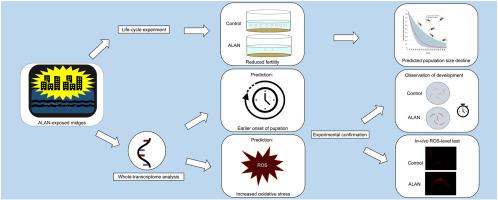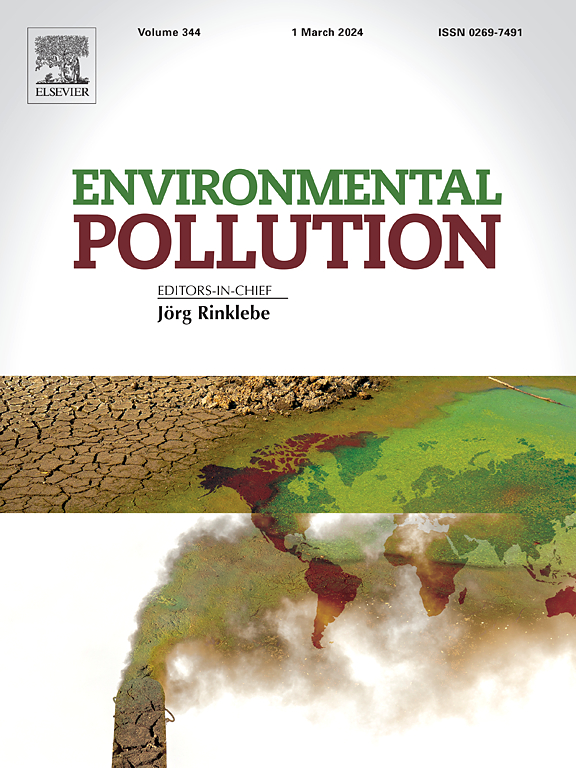Transcriptomics predicts artificial light at night's (ALAN) negative fitness effects and altered gene expression patterns in the midge Chironomus riparius (Diptera:Chironomidae)
IF 7.6
2区 环境科学与生态学
Q1 ENVIRONMENTAL SCIENCES
引用次数: 0
Abstract
The emission of artificial light at night (ALAN) is rapidly increasing worldwide. Yet, evidence for its detrimental effects on various species is accumulating. While the effects of ALAN on phenotypic traits have been widely investigated, effects on the molecular level are less well understood. Here we aimed to integrate the effects of ALAN at the transcriptomic and the phenotypic level. We tested these effects on Chironomus riparius, a multivoltine, holometabolous midge with high ecological relevance for which genomic resources are available. We performed life-cycle experiments in which we exposed midges to constant light and control conditions for one generation. We observed reduced fertility under ALAN from which we predicted the population size to decline to 1% after 200 days. The transcriptomic analysis revealed expression changes of genes related to circadian rhythmicity, moulting, catabolism and oxidative stress. From the transcriptomic analysis we hypothesised that under ALAN, oxidative stress is increased, and that moulting begins earlier. We were able to confirm both hypotheses in two posthoc experiments, showing that transcriptomics can be a powerful tool for predicting effects on higher level phenotypic traits.


求助全文
约1分钟内获得全文
求助全文
来源期刊

Environmental Pollution
环境科学-环境科学
CiteScore
16.00
自引率
6.70%
发文量
2082
审稿时长
2.9 months
期刊介绍:
Environmental Pollution is an international peer-reviewed journal that publishes high-quality research papers and review articles covering all aspects of environmental pollution and its impacts on ecosystems and human health.
Subject areas include, but are not limited to:
• Sources and occurrences of pollutants that are clearly defined and measured in environmental compartments, food and food-related items, and human bodies;
• Interlinks between contaminant exposure and biological, ecological, and human health effects, including those of climate change;
• Contaminants of emerging concerns (including but not limited to antibiotic resistant microorganisms or genes, microplastics/nanoplastics, electronic wastes, light, and noise) and/or their biological, ecological, or human health effects;
• Laboratory and field studies on the remediation/mitigation of environmental pollution via new techniques and with clear links to biological, ecological, or human health effects;
• Modeling of pollution processes, patterns, or trends that is of clear environmental and/or human health interest;
• New techniques that measure and examine environmental occurrences, transport, behavior, and effects of pollutants within the environment or the laboratory, provided that they can be clearly used to address problems within regional or global environmental compartments.
 求助内容:
求助内容: 应助结果提醒方式:
应助结果提醒方式:


